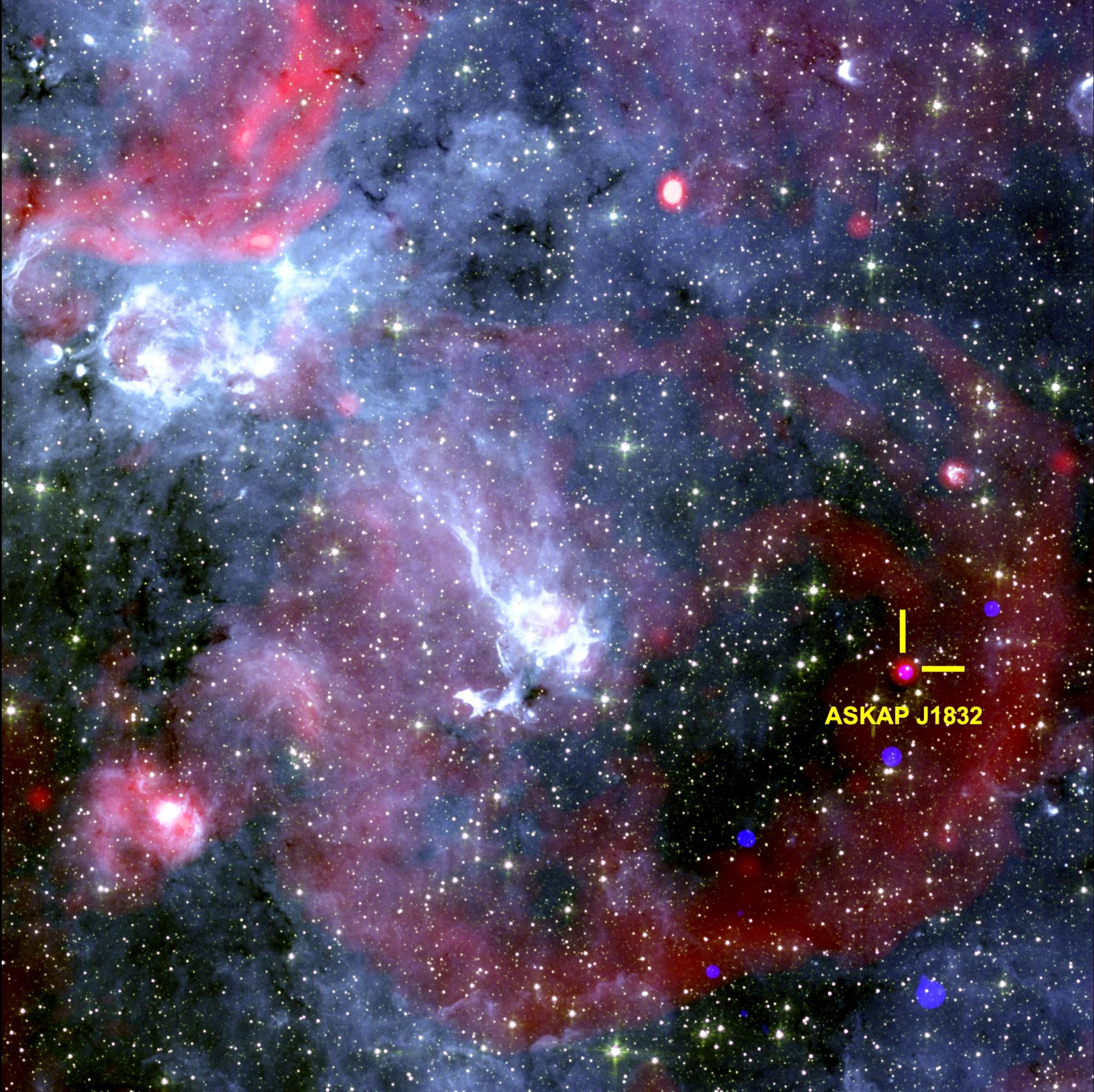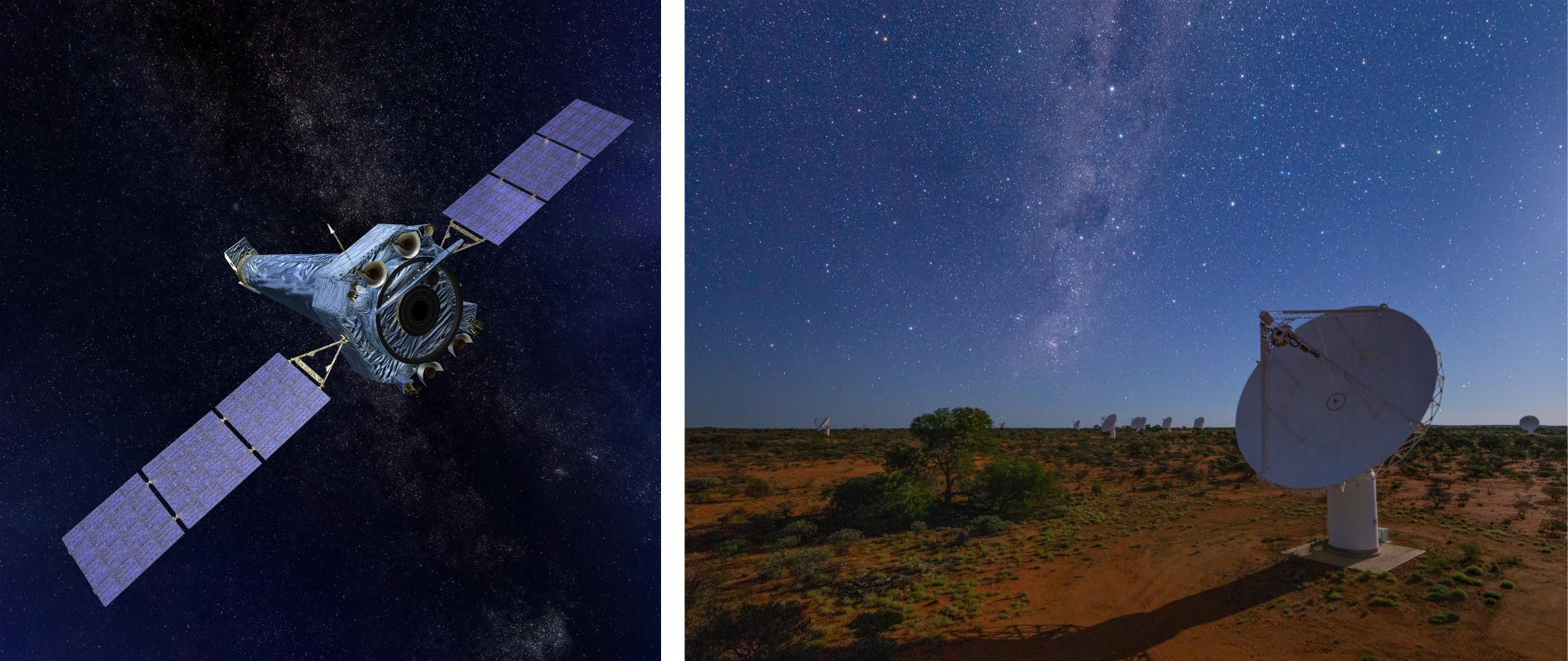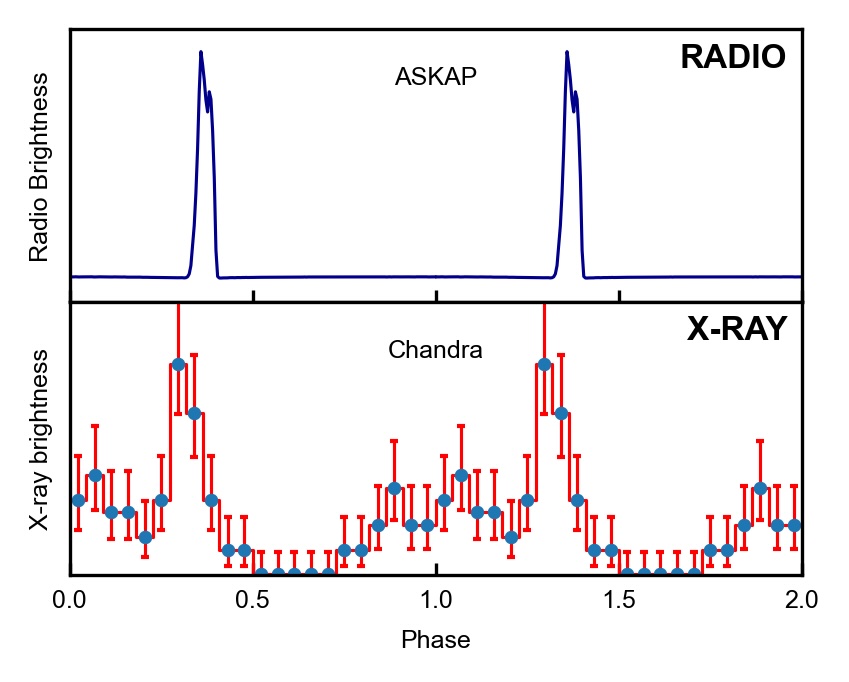Mysterious cosmic object detected emitting radio and X-ray signals synchronously
The study, which reports the first detection of X-ray emission from a long-period radio transient, involves the Instituto de Astrofísica de Andalucía (IAA-CSIC)
The finding, made possible by NASA’s Chandra X-ray Observatory and CSIRO’s ASKAP radio telescope, may shed new light on the origin of similar mysterious signals observed elsewhere in the sky
A lightshouse in space that lights up for two minutes —with an intensity that challenges our understanding— and then remains dark for more than forty, repeating this pattern again and again, offers a fitting metaphor for the behavior of long-period radio transients (LPTs). These recently discovered astronomical sources, whose nature remains elusive, emit brief pulses of radio waves at regular intervals lasting minutes or even hours.
A study published today in Nature reports the discovery of a mysterious cosmic object known as ASKAP J1832–0911, an LPT that emits synchronized radio and X-ray signals every 44 minutes. “This is the first time X-ray emission has been detected from an object of this kind, and what’s most surprising is that its behavior is unlike anything else we know in our galaxy: it’s extremely bright, varies greatly in intensity, and doesn’t fit into traditional categories like neutron stars or white dwarfs,” says Miguel A. Pérez-Torres, researcher at the IAA-CSIC and a co-author of the study.

The region around ASKAP J1832-0911. X-rays from NASA’s Chandra Observatory, radio data from the SouthAfrican MeerKAT radio telescope, and infrared data fromNASA’s Spitzer Space Telescope. Credits: Ziteng (Andy) Wang, ICRAR
The international team, led by the International Centre for Radio Astronomy Research (ICRAR), discovered ASKAP J1832–0911 —located in the Milky Way about 15,000 light-years from Earth— using the ASKAP radio telescope, situated on Wajarri Country (Australia) and operated by CSIRO, Australia’s national science agency. The radio signals were found to match pulses of X-rays detected by NASA’s Chandra X-ray Observatory, which happened to be observing the same patch of sky at the same time.
“Finding that ASKAP J1832–0911 emitted X-rays was like finding a needle in a haystack,” says lead author Dr. Ziteng (Andy) Wang from the Curtin University node of ICRAR. “ASKAP has a wide field of view across the night sky, while Chandra sees only a tiny fraction. So it was a stroke of luck that Chandra was looking at that same region at just the right time,” he adds.

Artist's illustration of NASA's Chandra X ray Observatory in space (left) and photo of CSIRO’s ASKAP radio telescope on Wajarri Yamaji Country in Australia. Image 1 credit: NASA/CXC & J. Vaughan | Imagen 2 credit: Alex Cherney/CSIRO
MYSTERIOUS COSMIC OBJECTS DEFYING CURRENT THEORIES
Long-period radio transients (LPTs) represent a newly identified class of astronomical objects. Since their discovery in 2022, only about a dozen have been detected across the entire sky.
Currently, there is no clear explanation for what causes these signals or why they “switch on” and “off” in such long, regular, and unusual intervals. Detecting them in both X-rays and radio waves could help astronomers identify more such objects and gain insight into their nature

Radio and X-ray light curves showing how ASKAP J1832-0911 pulses at both bands. Credit: Ziteng (Andy) Wang, ICRAR
According to Professor Nanda Rea (ICE-CSIC and IEEC), the study’s second author, “Finding one of these objects suggests there are many more out there. The discovery of its transient X-ray emission opens new perspectives on their mysterious nature.”
‘What was also really remarkable is that this study shows an incredible team effort, with contributions from researchers around the world with different and complementary expertise,’ adds Rea.
The discovery also narrows down the possible explanations for what kind of object this might be. Because X-rays are much more energetic than radio waves, any proposed theory must account for both types of emission—providing a crucial clue in an as-yet-unsolved cosmic puzzle.
“This object is thousands of times more luminous than expected based on its rotation, which forces us to reconsider some of our physical models,” says Pérez-Torres (IAA-CSIC). “It might be an old magnetar —a neutron star with an extremely intense magnetic field— or a super-magnetized white dwarf. Both possibilities challenge current theories,” he concludes.
- “Detection of X-ray Emission from a Bright Long-Period Radio Transient”, publicado en Nature.
- https://www.nature.com/articles/s41586-025-09077-w
- Miguel A. Pérez-Torres - torres@iaa.es
- Instituto de Astrofísica de Andalucía (IAA-CSIC)
- Unidad de Divulgación y Comunicación
- Amanda López – alm@iaa.es
- Emilio García – garcia@iaa.es - 649 407 445 (vía whatssap)
- Celia Navas - navas@iaa.es
- https://www.iaa.csic.es
- https://divulgacion.iaa.csic.es

